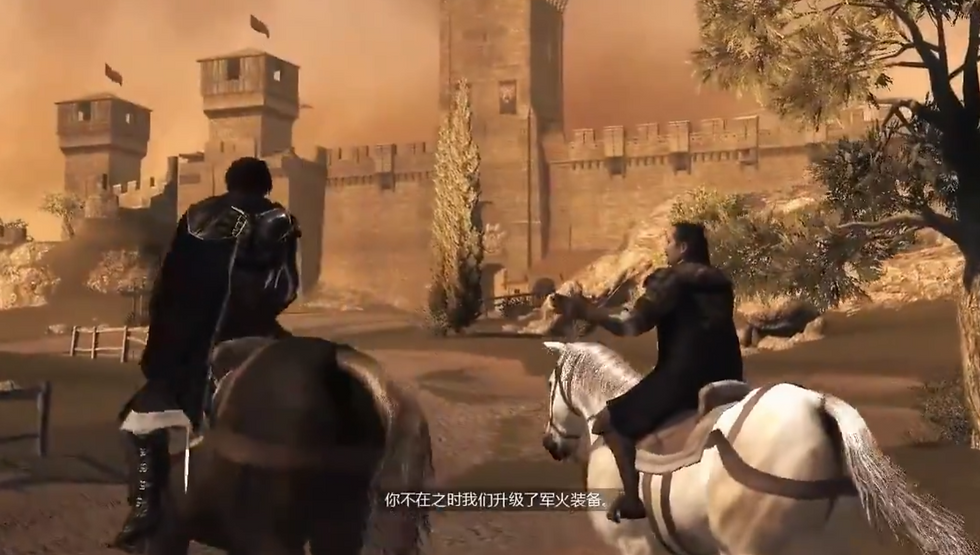If Ubisoft wants to create AC: China
- shaohaoshu1994
- Nov 27, 2022
- 3 min read
Updated: Feb 2, 2024
Some ideas about the game
Team: Solo Project
Time: 2 weeks
Tool: MS Word, Photoshop
Game Era
Dynasties selection
Before choosing a dynasty, there is a question to decide whether it should be associated with the European story background. If the answer is sure, here are some points need to know.
1. The earliest inclusion of Chinese elements was in Assassin's Creed 2, which took place in 1486 when China was in the Ming Dynasty.
2. Marco Polo arrived in China in 1275, while the Yuan Dynasty was attacking the Song Dynasty.
3. The Maritime Silk Road developed very well during the Song Dynasty. The key reason for this was the obvious improvement of shipbuilding technology and navigation technology in the Song Dynasty, the compass was widely used in navigation, and the voyaging ability of Chinese merchant ships was greatly enhanced.
So if I want to choose, Yuan Dynasty and Song Dynasty can be good times to start.
Game map
We all know that China is a country with a large land area. So it is impossible to create a huge map at once.
Personally, I think a map similar to Valhalla would be better to play. One main area and the remaining few cities that are far away can be used as branches, such as Guangzhou, which can be extended to play as a maritime map. (Maritime Silk Road)
Small villages are attached to large cities and can use to connect with two cities.As recorded in ancient Chinese books
Map/Location Conversion
When the player uses fast travel to a city. The animation could be like that riding a horse into the city gates. Or far away from the gate, like Brotherhood did.

(ride a horse to the gate.)
Game modes
Escort agency
Although the history of decency came out very late, in the Qing Dynasty, before the Song Dynasty, due to the low level of productivity, the transportation of bulk goods was basically managed and protected by government agencies, such as the transit envoys in the Song Dynasty. And private land cargo transportation was small and generally could not attract the interest of robbers. So before the Song Dynasty, the shape of Chinese commerce meant that dart boards could not exist.
Escort
Transporting goods or protecting people from one location to another. On the way to encounter robbers robbery or accidental occurrence, such as a cliff rock falling.
Players can adjust the formation or people to help complete the task.
After upgrading, players can cover up to reduce the risk of being robbed.
Robbery
After getting information, set up traps and ambushes in advance.
Adjust personnel standing, and tactical design, for example, release arrows first or trigger the trap first. Use the threat to force the enemy into the encirclement.

For example, the player has 3 options, 1. Push stones to block the road. 2. Ambushes in the woods. 3. Set traps on the road.
And team members could be on foot or on horses. The player can set up before robbery.
Also could place one overwatch to count the time and alert the player before reinforcements.
This mode can also be used in mobile games. Players can easily understand how this mode works and how to control it.
Reinforce or Investigate
Players will receive reinforcements in advance, and players need to arrive at the scene to support and capture the bandits within the time limit.
However, if the player does not make it in time, the mode will be changed to the investigation. The player needs to investigate the robbery scene. and hurt down the robbers.
Beggar's Gang
Drawing from historical roots, this mode involves interacting with the beggars' network for information and intelligence, reminiscent of the network in "John Wick". Players can employ beggars for gathering crucial intelligence.
Skill Tree Concept:
Ancient Chinese Martial Arts with Concealed Weapons
Stealth Agility:
Enhanced mobility both indoors and on roads, significantly reducing noise and decreasing the likelihood of alerting enemies. This skill emphasizes silent movement, drawing from traditional light-footed kung fu techniques, ideal for evasion and stealth approaches.
Hidden Arsenal Mastery:
Mastery in the use of various concealed weapons from ancient China. This includes proficiency in quickly deploying hidden weapons during combat, turning defensive maneuvers into unexpected attacks.
Defensive Surprise:
Specialized training in the art of integrating concealed weapons with defensive tactics. This skill allows the practitioner to launch concealed weapons effectively when blocking or parrying, creating an element of surprise and turning defense into offense.
Offensive Concealment:
Advanced skill in utilizing concealed weapons during offensive moves. This focuses on seamlessly integrating hidden weapons into attack sequences, enhancing the unpredictability and lethality of strikes.


Comments